
Who are these rankings for, anyway, and how much investment of your time and energy do they warrant?
Who are these rankings for, anyway, and how much investment of your time and energy do they warrant?
The next big tech upgrade has walked into your own office, plopped down on your desk and is waving hello. With a smirk.
Delivering care? Check. Saving lives? Check. But are hospitals hitting the mark on patient experience? Frankly, they’re struggling.
Money – how you talk about it, spend it, your need for it, your intent with it, the cost of your care – is a significant risk point.
Talk about headwinds. Literally, the weather at last week’s annual J.P. Morgan Healthcare Conference in San Francisco was tumultuous. Rainstorms. Wind. Falling trees. Wearables beeping alarms on the wrists of participants.
We asked four broad questions to veteran advisors across legal, operations, innovation, digital, strategy, patient experience, marketing and more. Big takes: More of the very Hard Choices healthcare leaders are already navigating…and being ever smarter with the limited resources that remain. Welcome to 2023.
Read through it all, or click on the headshots below to skip right to each expert’s insight.
We asked intentionally broad questions to give each expert latitude to answer based on their own perspective and professional expertise. The diversity of perspective and nuance among responses was clear. And yet, there was dramatic overlap in the themes highlighted by each panelist. That triangulation – seeing similar answers from, say a transaction attorney and a digital expert – points directly to the themes healthcare providers will want to focus on in the new year. Here are those themes.
Note: In January, we’ll share findings from our 5th national survey of healthcare consumer perceptions, touching on many of the themes identified here.
The persistent shortage of healthcare workers was a universal theme. The issue is acute across the care continuum, but particularly challenging at the level of primary care – where pent-up demand is highest and the where the patient journey typically starts.
Full stop. Lower incomes and shrinking margins, along with reduced investment returns, either lead to every other issue or make solving them difficult.
Provider organizations will have to evaluate every investment and partnership. Tradeoffs loom. Health equity and workforce support are necessary – how do resources for those priorities get allocated? It will be a year of frank talk and tough decisions with a fierce need for clear and transparent communication from leadership.
After making hard choices comes taking action on them. Provider organizations can’t cut their way to success. They also need to “actively create what’s next.” That means no favoritism towards legacy solutions and openness to those delivering the highest impact at lower cost. Even if there’s an initial investment in time, money and training.
Or better ones for provider organizations. Whether through M&A, joint ventures or with payers. Though opinions vary on the likely pace of M&A activity in 2023, our panel agrees that mergers, acquisitions and partnerships will continue to make headlines as provider organizations seek the most efficient and sustainable path forward. Financial challenges will also push more productive conversations between providers and payers, perhaps spilling over into collaborative innovation. (One can hope!)
The challenges present an opportunity for transformation of tools and overarching digital strategies. It’s far more than telehealth – which is necessary and no longer a differentiator. Transformation means everything from saving money by reallocating print resources to digital marketing, to allowing patients greater access to their PHI through technology, to evaluating patient usage of mobile apps and improving ADA accessibility on web properties.
It’s part of the patient experience, it’s part of supporting the healthcare workforce, it’s part of fulfilling the mission to care for the whole person. And now, it’s also a business and regulatory imperative with ratings and credentialling agencies using equity as a metric.
This runs the gamut from the tangible – useable digital tools – to the conceptual – full transparency. Patients are looking for convenience to make accessing healthcare easier and more consumerized, ways to expand the front door of primary care, and clarity about how things work in healthcare and what they cost.
The mental health crisis – for the public and for healthcare workers – had been a topic of conversation for years before soaring into view during the pandemic. The issue of addressing people’s needs in a holistic way so they can live well and be productive – and be happy while doing it –remains in 2023.
People like and trust those who deliver care. While they value the role of hospitals and health systems – especially since the pandemic – the highest praise goes to caregivers themselves. However, our experts noted that some people don’t – or would prefer not to – think about their local hospital. And there’s also a just-under-the-surface skepticism about transparency and accessibility efforts, as well as lingering suspicion from days of rampant COVID-19 misinformation. That flashes a yellow light to provider organizations, and should compel them to frequently ask themselves the question, “Is what we’re doing operationally and conveying publicly truly representative of a patient’s experience at our system?”
Want to learn more about the details of each theme referenced above? Here are the responses provided by each panelist.

Workforce and Inflation. The first thing people do when costs rise is put off caring for their own health. Additionally, with all facets of healthcare struggling to keep up with demand, staffing will continue to be one of the most important challenges to tackle.
In terms of staffing, I hope to see better pay and working conditions along with an increase in young people going into the medical fields due to the demand and opportunity for a solid career trajectory. But the U.S. needs to make it a financially viable career path, especially for PCPs, OBs, etc. One major concern regarding staffing is people – who already put off care due to COVID and may be behind in receiving simple wellness checks – not being seen in a timely manner. Additionally, the continued struggle for people to find PCPs who are accepting new patients.
Transparency for patients regarding health records and costs, especially with institutions potentially charging money for sending messages to doctors via patient portals in the coming year. No more excuses for not being able to provide information about cost of procedures. Make that information readily available to patients via patient portals – especially if you are going to start charging to simply answer a patient’s question.
In terms of what’s cooled off, telehealth – it’s expected and offered by everyone and no longer a differentiator. Now, it’s about how you improve upon the experience and make it easier for patients of all ages to receive care remotely.
There is certainly increased trust and respect for the work of hospitals, health systems and the medical field in general. But I think patients, aka consumers, are increasingly frustrated by a system that makes it incredibly difficult to find and receive the care they need in a timely manner along with a complete lack of transparency when it comes to costs for procedures and services. The insurance companies blame the health systems, and the health systems blame the insurance companies, and patients and clinical providers are stuck in the middle. This is something marketers need to especially keep in mind when it comes to communications and marketing materials: Is what you’re conveying truly representative of a patient’s experience at your system?
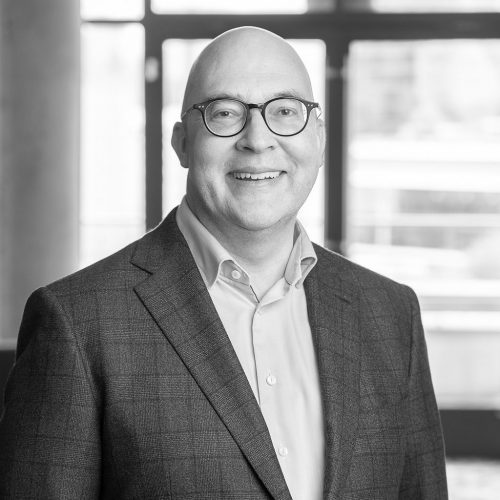
Inflation, workforce challenges and investment losses dominated 2022. Along with recovering from the pandemic’s impacts on operations, these forces are leading well-positioned hospital systems of all sizes to seek increased scale providing operational, financial and clinical efficiency. Hospital transactions, which have been down since 2019, are roaring back in 2023 as organizations prioritize patient care, quality and access over historic governance structures.
The fragmentation of the American hospital system bears significant responsibility for its high costs and middling quality. Consolidation leads to more profitable hospital systems with higher quality and better patient outcomes. Scale benefits can take time to materialize, especially when the consolidation is the result of a weak organization that delayed partnering as long as possible, but improved quality will be the result of this trend towards larger, more efficient hospital systems.
Multi-region transactions will be a hot topic in 2023. For example, as Advocate and Atrium stated in their merger communications, the Midwest and the MidAtlantic are now adjacent healthcare markets. While the scale benefits of hospital transactions can include in-market clinical and referral synergies, those tend to be secondary to the market-independent structural synergies of best practices, corporate finance, population health infrastructure, purchasing and other synergies. However, to fully realize those benefits, organizations typically need to undergo structural and ownership change, indicating that loose affiliations and other “dip-the-toe-in” partnerships are likely to cool off in 2023.
People are expecting more from their hospital systems. While they trust, appreciate and support their care teams, they are increasingly skeptical of the organizations for which those clinicians work. Layer in front-line labor challenges and patients directly shouldering an increasing share of the healthcare dollar and the frustration becomes palpable. However, the industry remains filled with folks who entered healthcare to help others. Organizations that can build environments where those folks want to work will be successful going forward.

Inflationary pressures (including the cost and access to capital) coupled with skilled labor shortages should be the predominant headwind in 2023. Our practice diligences healthcare services in a broad swath of sectors – big and small – and these trends, unfortunately, continue to worsen as we enter the new year. Perhaps in a distant second is the likely increased regulatory focus that usually accompanies a split Congress.
Unfortunately, there is likely to be some distress followed by restructurings – both in and outside of court. Those acquirers whose balance sheet and operations allow are going to have some compelling M&A opportunities.
The M&A landscape has cooled from a record 2021 and hot 2022 (through Q3). That said, healthcare M&A is nothing if not resilient and, as we know, recession resistant. The march towards value care and innovation through healthcare consumerism are also poised to make some big leaps in 2023 with ‘real’ capital lining up to advance their efforts.
The public values and trusts their physicians and care teams, including their local hospitals. I think there are other players in the healthcare ecosystem that are less trusted, and there are going to be some questions brought to the forefront about how the pandemic was handled in connection with the aforementioned divided Congress. That could exacerbate the shaky footing.
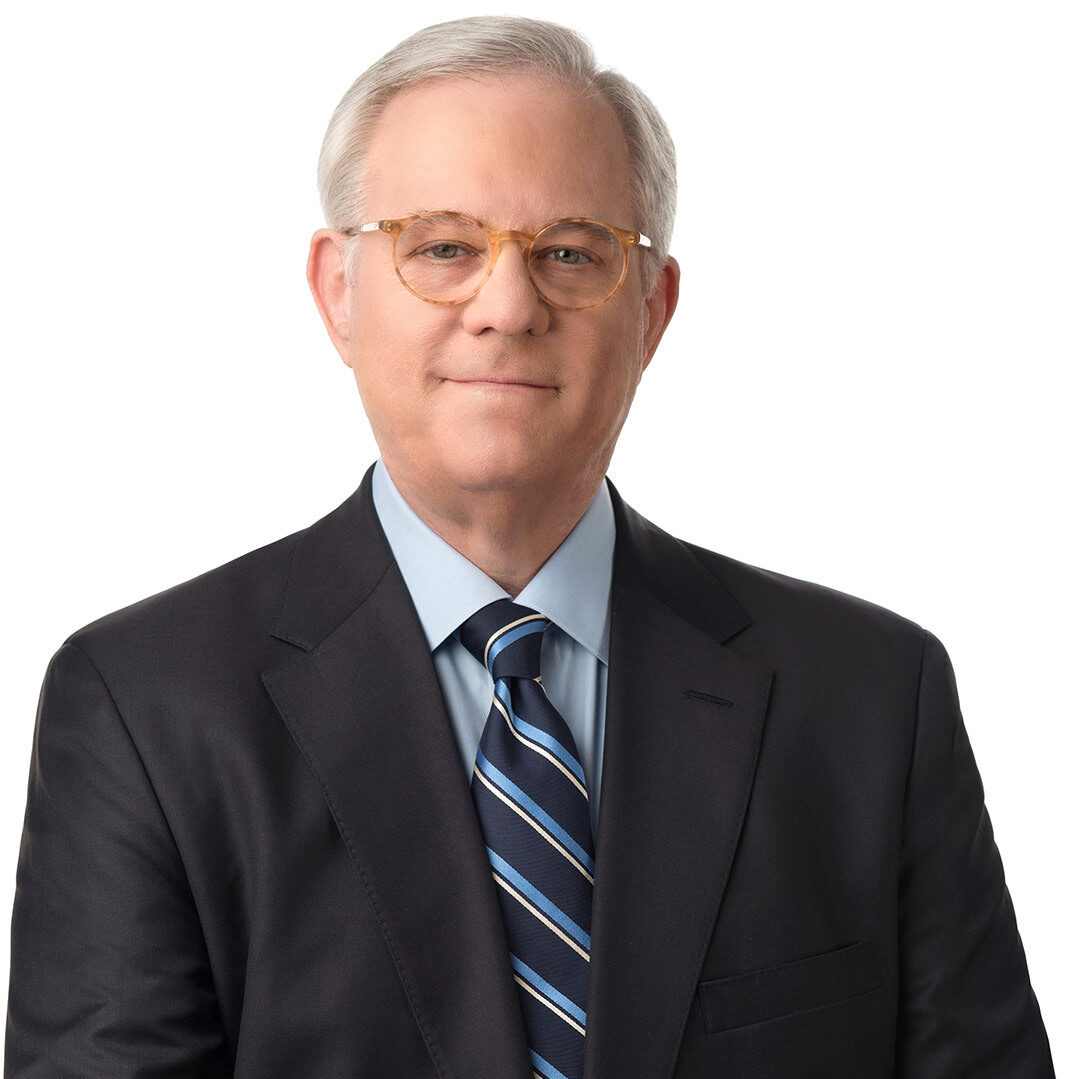
If picking just one thing, it would be a continuing workforce crisis for all our healthcare clients, particularly hospitals and health systems. We simply don’t have enough front-line healthcare providers to meet the demand.
The shortage is causing crippling labor costs, and there’s no significant mitigation of this problem on the horizon. In addition to stripping hospital margins, workforce shortages in key areas will likely continue to drive a shift towards access through digital healthcare platforms.
Again, there should be an uptick in telehealth services and remote patient monitoring. There are some very innovative solutions available that could continue to change the way healthcare is delivered.
Also, expect new rules related to HIPAA and information blocking – healthcare data privacy and security will continue to be huge.
On a different note, it’s tough to ignore what looks to be a continuing crisis in mental health – more people are being impacted, and it’s a continuing need that must be addressed.
Finally, I see a continued trend toward more non-traditional companies getting into healthcare.
Our client hospitals and health systems have rallied public support well in the COVID era and have burnished their reputations as critical community assets. This could be one of the major lasting impacts of COVID – additional well-deserved respect is accorded our local healthcare systems and, in particular, our community healthcare providers.
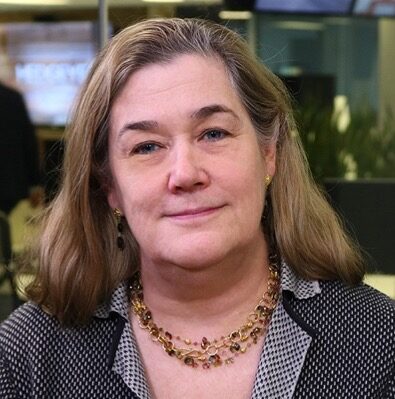
Workforce development and labor shortages. It is underappreciated how durable the labor disruption will be. Healthcare has not faced a shortage of resources in 50 years and, as such, has not been forced to make hard choices and/or innovate its way into less dependency on human capital.
It will vary between non-profit and for-profit or, perhaps more accurately, between health systems that are prepared for and actively engaged in cost control, including healthcare’s most significant input, labor. The only answer, ultimately, will be innovation – particularly that which saves time. In the near term, there are likely to be reductions in service lines, backlogs of cases and even reduced access. Ongoing labor disputes are also likely.
The most important trend we see that will aggravate labor and workforce issues is payer conflict. That will probably lead to more health system consolidation, about which the FTC will have fewer arrows in their quiver than they would like. Ultimately, health systems that control their markets will be price setters, and that is the direction many will head.
The public generally supports their doctors and, to a certain extent, the dominant hospital in their region. However, that trust is eroded by a lack of transparency on price and, often, quality. Payer conflicts with employer plans are going to drive even more people into high deductible plans where price really matters as most people become cash payers.
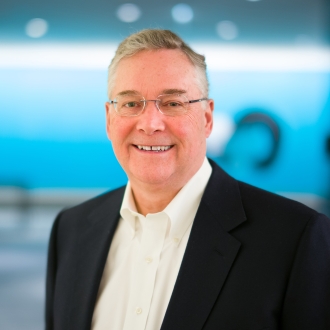
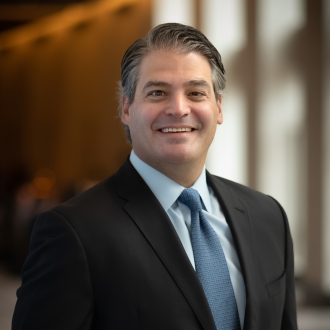
Workforce/labor in every way imaginable – cost structure, retention, burnout, training/development, pipeline, staffing models – has to be put at the top of the list right now. This was mentioned in last year’s predictions for 2022 and it carries forward into 2023.
Another force to highlight is the ever-expanding world of partnerships and M&A activity beyond traditional hospital-to-hospital transactions. Hospital transactions are still a big part of the landscape as we move into 2023, but we are seeing a wider variety of joint ventures and other arrangements in areas such as ambulatory access, digital health, high-reliability care, health equity and payer/health plan products. Our clients are investing heavily in partnerships that fortify their presence across the ambulatory ecosystem surrounding their hospitals.
One anticipated change from workforce challenges will be the continued evolution of new care delivery arrangements including alternative sites and care models. The advancement of digital and key strategies such as Hospital at Home are part of the solution.
We will continue to see health systems focus on building scale and capabilities outside of the traditional hospital component of the healthcare ecosystem. They will not be short of options and partners in this effort, but the challenging economy and limitations to accessing capital will determine how extensively and quickly many organizations collaborate.
All of the areas mentioned above will continue to be hot throughout 2023. In addition, health equity, digital health and programs/models that truly integrate care financing and delivery (especially with managed governmental payer lives) will continue to be top of mind in 2023.
In general, opportunities that are capital intensive and have a long time to market or realization of value have cooled off.
In many ways, the pandemic has fortified the trust that patients have for their providers and health systems. There is considerable admiration for all that providers have done to help us through the pandemic. At the same time, as traditional aspects of inpatient care melt to ambulatory settings and as ambulatory care melts to virtual and at-home settings, the need to expand the health system footprint to offer easy access across the continuum of care is greater than ever.
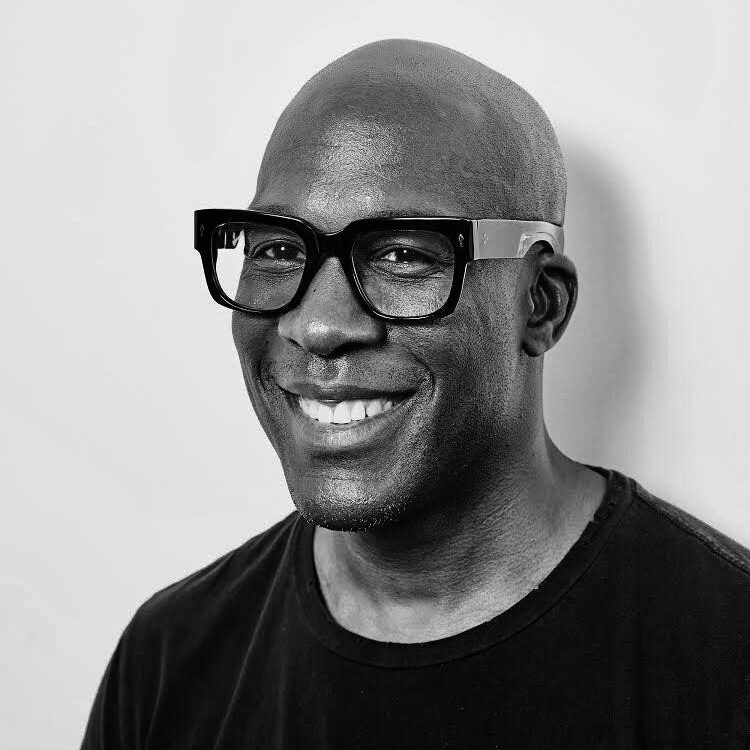
Digital transformation, which will include affordability and accessibility, particularly with underserved and rural communities.
It would help to close the digital divide. If we can start to think about better broadband access for the most vulnerable, we begin to close that divide. This would also allow more access to high-speed internet for educational and entrepreneurial uses.
The trend of care centers specializing in wellness has cooled off. A lot of them never differentiated themselves enough to make strong strides in the marketplace. My hope is that we get back to basics. I don’t need fancy couches and cappuccinos in the waiting room, I just need good, affordable healthcare.
There’s a lack of trust. I think COVID really exposed the misalignment of info. We’re at a place now where we don’t necessarily know which source to trust. But we’re now dealing with fear-driven policies that are forcing individuals and families to make tough decisions. We need people-centered policies that support healthy outcomes for all.

The workforce is the primary force that will drive healthcare next year. The needs of physicians, nurses and employees should serve as the North Star for all healthcare systems if they want to weather the financial headwinds and be successful. Without a healthy healthcare workforce, there’s no ability to deliver care. There’s no ability to realize and drive innovation. There’s no way to create healthier communities and improve the healthcare system.
It’s not one big change that will solve the workforce issue. Rather it will require HR, Operations, Communications and other areas working together to create a culture where people want to stay and where top talent wants to come to work. There’s a real need for health systems to solve for burnout, address recruitment and turnover issues, find ways to unlock the full potential of the resources they have and create a culture that is rooted in inclusivity and belonging. Not to mention, a reimagined strategy for how they communicate and connect with their workforce. These are the changes that need to happen to build a sustainable workforce and will be the most important work for healthcare organizations next year.
Beyond the workforce, there will be a heightened focus on financial improvement initiatives, including labor and non-labor expenses, patient access and acquisition and health equity. In a sea of strategic priorities, health equity has not been at the top of that list. But with this year’s release of CMS’s framework for health equity and US News & World Report’s unveiling their health equity methodology – not to mention the healthcare disparities and inequities that were illuminated and worsened by the COVID-19 pandemic – it will be interesting to see if health systems finally address this issue and start investing in it.
Honestly, I don’t think the average patient or consumer pays a lot of attention to their local hospital or health system. Especially if they don’t have ongoing healthcare needs. Sure, they trust their provider. But beyond that, how often are they thinking about and engaging with their clinician’s organization? I would wager very little. I think people also view the healthcare system as wildly inefficient, costly and confusing. If we truly want to improve the health of communities and solve some of the underlying causes of our unhealthy nation, provider organizations need to be collaborating with their communities and addressing social determinants of health. Maybe then, patients and consumers will start to see hospitals and health systems in a more positive, visible light – as a place that helps you be well and takes care of you when you’re sick.
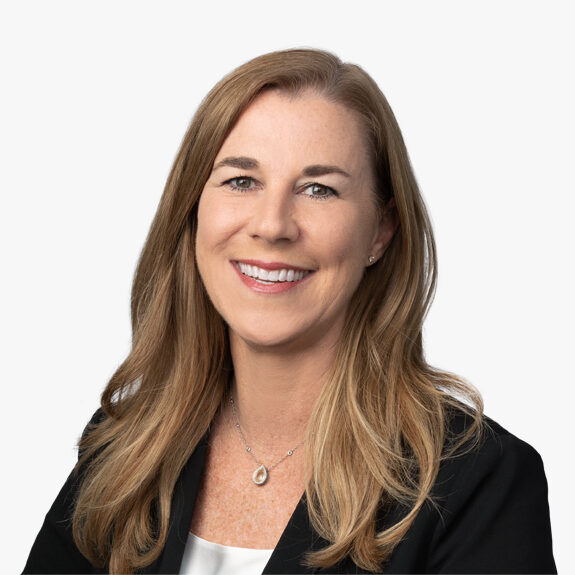
“Financial headwinds” will be the primary force and continue to exert outsized pressure on healthcare in 2023. These headwinds, which collectively include things like increased labor costs, inflation, access to capital, reimbursement, and so on, make it challenging for health systems and other industry players to execute on more strategic and innovative strategies. Notwithstanding that, collective demand for improved performance across the industry remains high, which will require health industry players to evaluate their portfolios, geographies and partnerships to enable improved ability to provide accessible, high-quality care to the patients and communities they serve.
With every challenge comes an opportunity, so these financial pressures are motivating organizations to move more quickly on strategies across the care continuum. This pressure will hopefully result in innovations to address a lot of pain points providers are currently experiencing, from labor force to patient experience to cost management. We’ll see a lot of healthcare organizations looking beyond their own four walls to outside collaborators to harness the power of their own data, work more efficiently and develop solutions that “work smarter, not harder.”
Even as the economy presents challenges, expect healthcare mergers and acquisitions to continue in the year ahead. For those in the position to buy, this opens the door to acquiring distressed assets or consolidating with others. For others, portfolio reassessment will result in divestitures or joint ventures of assets that organizations no longer feel compelled to wholly own and operate.
What has not cooled off is the conversation about workforce wellness, as providers and staff remain stretched. That conversation should continue as there is no substitute for nurses, doctors and those on the front lines in caring for the population, even when that care is becoming more virtual in some instances.
We’ve certainly learned over the past several years that healthcare workers and healthcare organizations are essential. While patients may have trust in their individual providers and maybe even their local hospital or health system, there is great dissatisfaction with the incredibly complicated puzzle of providers, payers, pharmaceuticals and the sources of healthcare funding. The increased focus on well-care and not sick-care will enable different engagement between consumers and the health care system, which raises the prospect of a healthier health system for all.

Workforce/labor will continue as a singular challenge for healthcare systems and providers. It adversely impacts access to care, quality of care and financial well-being of organizations. Many hospital systems will still not be able to open all their licensed beds due to the inability to staff them.
Within the sizeable group of hospitals that already operated at single-digit or negative margins, many will seek to consolidate with other systems or dramatically restructure. I’m optimistic that for hospital systems that have proactive and engaged leadership, this dynamic will lead to innovation in delivery models and technology – perhaps even in collaboration with payers and employers.
Payers, providers and investors continue to focus on delivery models and technology that allows healthcare to be delivered at home or otherwise outside the hospital or physician office. Consumerism and “bending the cost curve” will drive this trend through 2023 and beyond. Provider organizations will increasingly assume financial risk, and payers will continue to build out provider-side capabilities. Ironically, dedication to outcome-based reimbursement models such as improved clinical outcomes, preventative care targets or reduction in medical errors, seems to have stalled a bit and isn’t perceived as a solution to the near-term existential threats providers face.
I can honestly report that I have seen unprecedented community support for and goodwill towards their local hospitals, health systems and providers. This is particularly true for hospitals and health systems that are transparent about industry challenges and aggressively engaged to tackle them. In my experience, community stakeholders want to be part of the team and the discussion.

Our health system M&A clients are most concerned with achieving financial sustainability and addressing quality-of-care issues in the face of organizational stress. These forces have caused a significant increase in parties considering transactions.
We sampled ~15 health systems that our team is working with around the country in evaluating M&A opportunities. Two-thirds are hospitals seeking a larger partner. One-third are larger systems pursuing growth. 20% are local government-sponsored, 20% faith-based, and 60% secular. Local Governments are the category most likely to undergo change in the coming years.
The high degree of variance in the regulatory environment from state to state cannot be overstated. Our bankers are working on transactions in 13 states and involve 35 hospitals. The difference in pace and stance toward business in markets like California, Illinois and New York is vastly different from states like Alabama, Georgia, and Kansas. That has a bearing on partnerships motivated by a desire to construct new facilities or pursue vertical integration.
Many of the independent hospitals we are working with are seeking partnerships that address community relations, transparency and patient experience. The role of foundations has taken on greater importance. Nonprofit acquirors are now more commercially skilled and are utilizing structures that create meaningful proceeds to further support health needs in the community. Some of these resources are filling a void that exists in lower acuity, non-hospital settings.

Lawson & Associates
Significant operating income losses coupled with declining investment returns will force hospitals and health systems to reduce non-corporate initiatives and staffing. Over the last few years significant effort has been placed on health equity efforts, so health systems will need to reconcile the costs of those endeavors with increased salary demands by clinicians.
Significant and strategic communication resources will be needed for public and internal communications should health systems trim back social initiatives. It’s easier to initiate on these than retreat. Threading the needle will require outside communication assistance.
Quality parameters will become a priority for antitrust regulators looking at mergers and collaborations. Health systems will need to match quality measurement variables to insurance company models long before requesting mergers. Health systems will also need to reach across the aisle to insurers to start building trust early rather than ending up in what are too often combative negotiations.
As both a current, long-term patient and a healthcare executive I respect both sides of the equation. Patients trust the health system as long as their care team is supportive. When healthcare workers are negative towards a health system – in public or private – then the public’s opinion will turn. It’s one thing to address public protests, but more difficult to assess and manage are private bedside discussions between caregivers and patients. That’s where the focus needs to be both short and long term.

Ongoing financial constraints caused by inflation, rising costs of labor, etc.
We hunkered down and got through the pandemic but have emerged with seemingly more intractable issues to face. Something has to give: Providers can’t just grind through or cut their way out of financial challenges. Healthcare no longer has the luxury of maintaining the status quo, doubling down on what’s always been done or wasting precious time overly focused on what competitors (or Amazon) are doing. In 2023, healthcare providers should focus as much energy and as many resources as they can muster in creating what’s next, getting clear on what they do best and carving out a brand position and strategies that are laser-focused on who they want to be and leaving behind who they’re not.
We all need to continue investing in the transparent conversations that started in 2020. After all, there’s a reason that the consumer brands that invested in communications in 2020 and 2021 increased in value by an average of 43% during that time.
What’s hot: Responses to all the tough forces at play, such as…
People don’t think about hospitals and health systems unless they have to. People “in the real world” are busy with their own lives, struggles and priorities. Most only think about provider organizations when they need care. They may think about provider organizations as they consider their skyrocketing insurance premiums, but otherwise most would prefer to think about the hospital only when they need it…which they hope is not often.
How do you communicate hope to your exhausted colleagues and stressed patients as you brace for another tough quarter and prepare for the hard choices you’re making to protect your organization?
We’ve had a few weeks to absorb the news of Amazon’s latest foray into the healthcare space. And we’ve mulled over the words of Neil Lindsay, Amazon’s health services chief, who told the Wall Street Journal on the day of the announcement:
“’We think healthcare is high on the list of experiences that need reinvention,’ said Neil Lindsay, senior vice president of Amazon Health Services. ‘We see lots of opportunity to both improve the quality of the experience and give people back valuable time in their days.’”
Reminds us of an anecdote shared by John Sculley, legendary former CEO of Apple and Pepsi. In a famous story, he recounted how he helped create the two-liter soda bottle, redefining beverage delivery. Seems people wanted more soda at home, but glass bottles were a pain to deal with – expensive, heavy, breakable and hard to deliver. So, Pepsi worked with DuPont to build a light, large plastic bottle. The rest is history.
Sculley drew parallels between his two-liter bottle and healthcare. The current model, he said, is complex, unwieldy, expensive and hard to deliver. It’s ready to be bottled in a different way. In a way that people want and need.
Primary care is ready for its own two-liter bottle. Apparently, Amazon thinks the same.
Now that the initial wow factor of that news has passed, the long-term outlook for the Amazon-One Medical deal and its impact on healthcare in general is hazy. But some hints of change are emerging, including what appears to be an 1849-style gold rush.
David Smith, founder and CEO of healthcare advisory firm Third Horizon Strategies noted that the intensity around this deal feels a bit different. For years, he said, there was “exuberance” that care delivery would be rethought and reworked through disruptive outsiders. And there was activity that created change at the margins. But, generally, no massive disruption. Referencing Haven, Amazon’s previous high-profile healthcare venture when it partnered with Berkshire Hathaway and JP Morgan Chase, Smith said that while it was a highly touted, “It was the first time I saw something of a collective yawn. There was an element of, ‘We’re not buying it, this time.’”
He maintains now that the pendulum has swung back with the One Medical news. Though unconvinced about how truly disruptive it will be in the end, the buzz he’s hearing is that it has “disruptive potential.”(For more on why Smith is a skeptic, see our Q&A with him here.)
Amazon wants to be a leader in “dramatically” improving the consumer experience when it comes to healthcare. For years, healthcare insiders have talked about an industry that’s facing disruptive forces and needs to improve. The catalyst? Consumer choice. While others are grappling with how to offer that, Amazon, Walgreens, Walmart and CVS have developed strategies that are deeply informed by their understanding of consumer behavior. Their challenge has been working through the care delivery part. So, this may be the moment when the stars align as a major force for change. One Medical is a consumer play and among the first of its kind from inside healthcare. Their new owners have essentially defined the modern consumer experience.
Smith said that Amazon has “an intriguing perspective to delivering care” as a tech business able to amass important information on its users and create a more frictionless, seamless and even integrated experience for patients. “If Amazon can bring that discipline to how a person thinks about their health and how they interact with the healthcare system, that’s something to be excited about,” he observed.
Primary care is valuable and essential. It’s an entry point to the rest of the system and critical for managing health. But primary care has low margins and needs scale to succeed on a business level. That’s hard to do, yet necessary for patients. And it’s attractive for investors who are ready to find that scale. Over the 15 years of its existence, One Medical has taken the time to build a model that appears to work, that people like and that has some traction. Amazon recognizes that steady growth.
Still, there’s a long way to go. “If Amazon/One Medical can activate the demand side and create a bolus in scale, that will make them a power center,” said Smith. “But the pathway will require far more scale than One Medical has today.” Critically, he said, it will also take a lot of trust for people to be comfortable shifting from buying their books and office supplies and baby formula to buying healthcare.
Depending on your perspective, Amazon and Optum have been either the bully or the hero in pushing transformation on the industry. So far, Amazon’s movement has been limited. It’s been sandboxing ideas, testing opportunities. As our colleagues at The Chartis Group put it,
“The company’s earlier investments and ventures (including PillPack, Halo, Amazon Care, and even Haven) seem to have provided learnings and building blocks.”
This is their biggest healthcare play yet. And it also feels different. It shows that, despite its failed Haven dance party with JP Morgan and Berkshire Hathaway, Amazon isn’t walking away. In one sense that’s a challenge to established players. But it can also give confidence to others, particularly in the health-services realm. It’s a signal that these types of plays are worth risking. We don’t know how this will shake out, but we know the healthcare sector is exposed both in the customer experience and the innovative process. Whatever happens with this marriage will affect both of those things and provide some validation for others.
As non-traditional players and health-services organizations redefine the consumer experience and build new models of care, there’s obvious pressure on hospitals and health systems. This points to hospitals slowly trending as places where really sick people will go.
Furthermore, it strengthens the emerging blend of virtual and in-person services that’s already re-written the rules for retail. Sri Mani, a director in The Chartis Group’s Private Equity Advisory and Strategy practice, said that this was one of his first thoughts when seeing news of the acquisition. “It begins to signal that a company that is built on virtual provision of services recognizes that not everything can be virtual,” he said. “Some things such as healthcare need a human touch.”
In this deal, he noted the hybrid of virtual and retail needed for primary care today. For traditional providers, it’s finding the appropriate blend by shifting from in-person to virtual, and for Amazon, it’s about shifting in the opposite direction. “They’re going to help us establish what the balance is,” he said.
This blended, hub-and-spoke model of care is becoming a reality. But the spokes aren’t necessarily owned by the hub. This doesn’t have to be unwelcome news. In fact, it might be liberating. Hospitals and health systems can use that to their advantage – taking bigger risks towards projects designed to improve the patient experience. Opening the door to new partnerships. Working with disruptors to create a referral pipeline so that each organization is providing the care it’s best suited to – and in the most efficient, convenient, cost-effective way. Eventually, that benefits everyone, even if the transition is painful. Amazon isn’t backing down, but it also has a long way to go. That leaves the door open to traditional providers and health services companies to do what they do so well while continuing to add a virtual component to care delivery.
And that’s not even mentioning Amazon’s own expansion in other areas, such as their August 5 acquisition of iRobot. (Might Amazon replace environmental services teams with Roombas at One Medical offices?)
When asked what lessons investors and other health services companies could take from this new partnership, Mani said, “It’s a signal to other companies out there. One Medical was the largest of them all – it was publicly traded, had the name recognition. And they sought out an acquirer right now. Should those other companies do the same?”
Mani noted that we’ve entered a market where volatility has made issuing equity challenging “If you’re any of these other parties who want to issue equity or borrow to fund new acquisitions, it’s tougher now,” he said. “You have to tell a growth story that’s really compelling because you have to juxtapose it against what happened at One Medical.”
So with Amazon’s strength in scale, capital, customer loyalty, data collection and analysis, supply chain and logistics and integrating digital with physical. What happens to the traditional provider? Mani is particularly focused on the local element, with a series of questions that no one has answers to, yet:
Let’s close with two reality checks:
Even with those caveats, Amazon splashing the cash is always important to watch. Not as a threat. But as a guide from which we can take ideas and use as a framework to consider how our organizations can pursue more efficient, cost-effective and consumer-friendly approaches to our work. It’s a chance to rethink our glass bottles and maybe come up with something just a little bit lighter.
David Smith is an expert in healthcare’s evolution, spending his professional time watching – and advising on – market trends, data and technology and how healthcare organizations can plan for the future. So, we checked in with Smith, who’s founder and CEO of healthcare advisory firm Third Horizon Strategies, for his takes on Amazon’s recent acquisition of primary care company One Medical. We also offer seven observations on what the deal means here.
Jarrard Inc.: What’s the feeling around the acquisition now that some time has passed?
David Smith: A few years ago, every time there was an event – or even whisper of an event – with Microsoft or Apple or Amazon, there would be an irrational exuberance. The feeling was, ‘These guys have figured out how to grow and scale and they understand consumers, so they’re going to figure out healthcare!’ And time after time, we haven’t seen a lot of disruption from these entities.
That led to something of a jaded reaction to these kinds of announcements around, say, 2017 or 2018. Haven is an example where there was a lot of press but also a bit of a collective yawn.
With One Medical, the pendulum has swung back a bit. A lot of smart industry people believe this has some disruptive potential. My sense is that the industry is cautiously excited about what this might portend for disrupting the traditional outpatient model.
JI: Does it matter what the healthcare industry thinks? Or is Amazon just going to do what Amazon is going to do and those of us in healthcare are getting hyped up?
DS: Where it should matter to Amazon or to anybody studying this is that industry professionals represent the collective wisdom and experience of decades of trying different reforms. Sometimes that can make their perspectives biased.
So, on the one hand, when it comes to disruption you don’t always want to take every word from those being disrupted. On the other hand, there is a lot of useful wisdom in that collective institutional experience. The fact that there’s some exuberance here suggests that there’s a sense Amazon is capable of doing something with the One Medical asset that other outpatient entities or institutional investors like Optum are less capable of doing.
JI: What else is driving the exuberance? Why now?
DS: Even though they do a lot of commercial business and B2B business, Amazon at its core is a tech-enabled consumer-oriented business. In that context, Amazon has successfully disrupted just about any other industry they’ve gone into. So, they have a track record. Still, the healthcare landscape in this country is littered with people with track records that tried healthcare and weren’t successful.
In my view there are two sources of exuberance:
The first is that, as a technology business which has created different pathways and nodes to amass important information on its users, Amazon’s potential ability to create a more frictionless, seamless, perhaps even integrated experience for patients is intriguing. Amazon has made it very easy to purchase things; they’ve made it very easy to access information. So, one area of enthusiasm is that if Amazon can bring that discipline to how a person thinks about their health and how they interact with the health system, that’s something to be excited about.
The second area is where the rubber meets the road. Amazon by itself is not going to be able to wield some kind of unique contracting power with health insurance companies. To be blunt, consumerism is really important, but we also need to acknowledge that, in this country, the healthcare dollar and how that dollar is allocated and organized is not a decision consumers make.
Amazon’s ability to be successful revolves around that first area. If they can activate the demand side and start to create a bolus in scale, moving them into a position where they can influence and shape how consumers are interacting with the system, that would make them a power center.
JI: Do you think they can do it? What are the caveats?
DS: Amazon has scale. They understand consumers. They understand technologies. That’s important but even so, there aren’t many examples of a heavily capitalized tech entity that has purchased a healthcare asset and been able to replicate the secret sauce that scaled their platform and extended it to healthcare. The economics in this industry are just so wildly different from any other.
If Amazon can activate significant demand, that kind of power center can wield the economics a lot differently. But the pathway to getting there would require far more scale than One Medical has today. It would also require the ability to gain the trust of a consumer who today is buying books or baby formula or office supplies. That consumer now has to look to Amazon and say, ‘I trust you to be my healthcare guide,’ and creating that trust is a monumental task.
JI: Pulling all of this together, what’s the opportunity for One Medical?
DS: Driving change and shifting the market are things that health systems, outpatient groups, health insurers and even governments are not great at. Employers have the potential to do it, but that requires employers coming together to think about how to wield their collective purchasing power. The challenge is that anybody who’s tried to harness and redirect the collective purchasing power of consumers in this country has typically done it for a narrow niche of the industry rather than comprehensively.
We’ll also need to watch the hundreds of thousands of permutations of healthcare finance. It changes by community, by payer, by rules, what’s written in, what’s carved out, how much is paid for any given service. And so not only do you have to aggregate different consumers and different communities with different levels of access, you have to do that in the context of highly unique healthcare ecosystems.
So that’s the biggest opportunity and challenge. If One Medical’s ambition is to do this at scale nationwide, they’ll start to look at these things more regionally and start to create patterns whereby they can aggregate and focus demand. That has the potential to begin shifting the economics.
Change is hard and, these days, it’s compounding. Big disruptions layered with small pivots have led to a tough environment where “one more thing” is a burden, not an exciting opportunity.
In this environment, healthcare executives and hospital board members are challenged with walking a fine line – guiding their organizations through disruption while acknowledging the uncertainty, making decisions when the path forward is foggy, and processing their own exhaustion, too.
Jarrard Inc. CEO David Jarrard and McDermott Will & Emery partner Michael Peregrine – both of whom have a deep interest in helping healthcare executives and boards navigate change – sat down to talk about the situation. They first acknowledge the challenge, then provide some historical context, then offer a few ideas for getting through it all.
Here’s an overview of the conversation. Listen to the whole thing or read the transcript below.
The Challenges:
It’s natural to wonder about the point of making long-term plans when we’re experiencing constant upheaval and uncertainty, when change has worn us down, when so much is out of our control.
In healthcare this is borne out as we see increasing responsibility – and opportunity – arrive at the door of provider organizations. And, some of the forces that have been serving as accelerants of change over the past few years have grown to be more disruptive. These factors are like the lighter fluid that started a campfire in a dry forest.
The Risk:
The tendency is to focus on and do what is doable. We tend to act on what’s right in front of us. And, while that is right and necessary in a crisis, it is not sustainable long-term. Spending too much time in the short-term leads to susceptibility to competition and disruption.
The Solutions:
David Shifrin: Michael and David. So, a lot of change disruption happening these days, and it’s happening in ways that put pressure on us and on health care leaders, both personally, as well as professionally.
I guess just a few things to note, to run down the list; although this definitely isn’t comprehensive, we’ve got the Dobbs decision, which is just one of a number of significant Supreme Court decisions this term. We’ve got the great resignation and kind of the workforce reshuffling, we’re facing down the prospects of massive inflation, which continues, as well as a potential recession. We’ve got the ongoing epidemic of gun violence. We at Jarrard just put out some resources to help healthcare providers be involved in that conversation. There’s the political divide; there’s lack of trust that we’re seeing. And then, Michael, you even mentioned the shakeup in college sports recently, with schools moving between conferences as something to flag. So, there’s so much, it’s exhausting.
And so, I’ll just kick us off here and then let you both converse with each other and bounce ideas back and forth but to start with, just talk about where that overwhelming collection of change is leading us and how people are processing it, or maybe failing to process it.
[00:01:54] Michael Peregrine: I think that’s right. You mentioned the change in college football. I think that put the capstone on it for me in terms of, it’s not that people and leaders are afraid of change, per se. I think they’re, to use your word, exhausted by this pace and the profound nature of the change. Too much, too fast change to traditions on which people counted on as normality in their lives, as predictable in their lives.
And one by two by three they’re being taken away from folks. So, I think, and David, I’m interested in your view. I think it’s a question of losing faith in the ability to control events. I know that I was particularly shaken in this environment of violence. The Abe assassination was one that I put down on my list because, again, I always thought we could count on living in a global society where we were civilized nations. These things don’t happen. And that’s really,
I guess the question, David Jarrard, I have is, I’m wondering if our leaders are saying that “when will this stop?” These things that we, these guard rails of society, these guard rails of organizations, seem to be eroding. And if we can’t count on them, and David Shifrin, going to your point, what’s the use of trying? What’s the use of planning? What’s the use of looking forward? You know, we talk about the three-year strategic plan being superseded by the five-year strategic plan, being superseded by the never-ending or ongoing strategic plan. Why even engage in strategic planning, if we’re just getting pummeled on a daily basis with things that we’ve counted on being obliterated? David, what’s your take?
[00:03:43] David Jarrard: Yeah. And in that environment, it’s the latest change that gets the greatest attention because it’s the latest change. It’s right in front of you. And everyday can begin to feel like a fire drill because you’re, as a leadership group, as a board, and even as a staff member.
I’m thinking of, of course, our hospital health system client, you run from event to event. It’s like having moved from a surgery suite, where everything is well planned and coordinated. And a good surgery, runs like a ballet. You know exactly what you’re doing, how you’re doing it to the ER, where you don’t know what’s going to come in the door next and you are running and gunning. You’re looking for supplies and trying to take care of people and keep folks alive and make it through the shift. It’s a whole different environment and way of thinking, and ER nurses and ER physicians, they have a different mindset than that orthopedic surgeon who’s been around for 30 years and knows exactly what they’re doing and how to do it.
It’s, and to your point, it’s not just the change. It’s the culmination of a whole series of changes. And it’s that sense of a lack of control where you can, you can begin to think, “what’s next? Why even act?” And I’ll add one more that we’re really paying attention to. It’s the decline of trust in organizations, in institutions. And healthcare systems continue to be very trusted organizations. And so, as other organizations become less trusted, more responsibility seems to land at the doorstep of our hospitals and health systems.
[00:05:09] Michael Peregrine: Yeah, from a leadership perspective, what troubles me is the concern that leaders for both executives and directors to pull back from engaging more fully in issues.
This is something that you, as you and I have talked, that Mitt Romney recently wrote about in the Atlantic. A concern that it’s easier to take the easiest, most simple solution to complex problems even though you have a fair likelihood of believing that it’s the wrong solution. But it’s easy, it’s quick and it’s available. Whether it’s denying that a problem exists or taking a shortcut. It’s this loss of a willingness to engage. Because again, we can’t count on traditional traditions. We can’t count on traditional guard rails to hold up. So, we’re playing short term ball. We’re making short-term decisions. We’re allocating capital on a short-term basis. We’re not planning for the future. So, when we come out of the current combination of crises that our clients are going through, will we be prepared for the next phase? Will we have prepared strategically? Will we be more susceptible to disruption and competition and regulation?
You just worry about this wearing down on our executives and our board members and it being just, when have we really hit the last straw? You’ve talked about it.
[00:06:32] David Jarrard: I agree. We, particularly, our leadership teams in healthcare systems are used to a strong sense of agency. Like driving forward and shaping the delivery of care and having some control over what happens next. And so, we are all built, particularly in healthcare, but other industries too, to do what’s doable. What can I do today that’s actually going to make a change and make a difference?
And Michael, I think you’re exactly right. Things have become so chaotic beyond our vision. That we act on those things that are right in front of us. So, we become tree people instead of forest people when we act. Which can be helpful short term; it can maybe be great in a pandemic, great in a global crisis, but not in a long-term event. It’s not a long-term solution to the crisis. That doesn’t seem to end.
[00:07:18] Michael Peregrine: And also, David, I’m concerned that if this is affecting our colleagues in the boardroom and in the C-suite, it’s got to be affecting the workforce as well. What do you say?
[00:07:28] David Jarrard: Oh, for sure. You know, our hospitals and health systems, they are not immune. they’re not an island. I mean, all the things that we experience in our communities are happening in the halls of our facilities as well. And we see it play out like position by position, job by job, in our hospitals.
And you see that in nurse staffing issues. You see it in labor activity. You see it in consumers being more and more reluctant to go spend that money, to receive the care that they should receive that would be helpful to them that will forgo longer-term health care costs. But, because they can’t see the future, they don’t know if they’re going to continue to have a job. They don’t know if they can live with continual 9% inflation that erodes their wages. They’re not seeking the care or may not seek that care in the future. Which has this cyclical effect, it reduces the revenue hospitals receive, which reduces their ability to pay nurses at a wage that is in competition with Chick-fil-A, for goodness sake. And so, it begins to build on itself into a significant issue.
[00:08:27] Michael Peregrine: And I guess the one thing that I worry about, particularly with respect to the board, is it’s trying to be a true partner in management and help lead the organization through all these very difficult times. Including the extraordinary economic issues that they’re having right now. Will board members be up to making the commitment to invest? And looking towards the future, in being an effective partner again if they are concerned that those things they knew and counted on are no longer reliable? And will there be another shoe to drop in terms of one of these change curveballs?
I particularly am concerned that what we see in the polls is about a lack of trust in democratic principles. At some point, is there a line that we’re crossing where our leaders will look to themselves saying, “after this, I know there’s really only one thing I can trust and it’s my judgment. It might not be the judgment of my collective group. My fellow executives, my colleagues on the board. I’m going to go with my gut because I know that’s not changing even though everything else around me is changing.” And that’s just antithetical to effective governance. And it is not what our industry needs at this time. And again, I’m sure you’re seeing this as well with the people you deal with in crisis management and communications.
[00:09:44] David Jarrard: That’s such a good point. Because we as a board, although the last, 20 or 24 months through the pandemic have been a very challenging time, we’ve been able to talk about the pandemic as an accelerant of change. What the pandemic has really done has made things that were already changing, just move faster.
So, telehealth, telemedicine, all the elements that are part of that new evolution of healthcare, are just occurring faster. And in some cases, that was a good thing. This strange environment gave us permission to move in the direction we wanted to go anyway. In the last year though, it’s felt like the changes have not been accelerants of change. They’ve been almost purely disruptive. And it’s impossible to anticipate. And so, the result is the bets are bigger. The risks feel higher. Because, as you say, no one has a model to predict this one outlier after another. There’s not necessarily math you can run. There’s not an analysis you can do that will give you a margin of error. So, you have to lean more on, and I love the way you say, you have to lean on your gut. What you believe to be true. And that seems to make ultimately the real job, the ultimate job of a board.
[00:10:51] Michael Peregrine: What worries me too, and has to be corrected, is the concern that the foundational principles, the core understandings of the industry, that our volunteer directors, or even our compensated directors came on board. And there were those principles or those operating guidelines, those basic understandings about the healthcare industry that they were weaned on, that they came to understand. The foundational principles and the understandings and the stipulations that underscore the strategic plan. Again, if we lose confidence in these types of factors because of the Powerful rapidity of change, we’re again, operating on an “I’m taking it one day at a time” basis. And that can be catastrophic for an organization’s future. And we, and that to me, that shift from a focus on the long-term vision to the “I just have to get through tomorrow” vision, that’s what we have to protect against.
[00:11:49] David Jarrard: And I know you work with so many boards, and I know how seriously they take the idea that they are trustees. That they are entrusted with this extraordinary organization, you know, often times hundreds of millions of dollars or multi-billion dollars of revenues and thousands of jobs. I know that weighs heavily. And so, they take seriously the ability to plan for the future and invest in the future two years, five years, 10 years out. I’m curious, as they are thinking today, how are they beyond their gut thinking about the future, sort of, envisioning about what the future is going to bring so they can plan for it?
[00:12:24] Michael Peregrine: It’s got to be a frustration again, because they contribute to a strategic vision in a variety of perspectives. They’re making bets on certain developments. And again, if they find out that they’re really unable, that change is coming too fast and too strong, their willingness to take informed risks, David, I think we’ll be limited. And that is, I keep coming back, that will be the greatest harm of this. And this is why, this kind of a miasma has to be stopped before it gets much traction.
And I was thinking about something. I saw a blip in the paper the other day. We just passed the 43rd anniversary, and I’m sure you have this on your calendar, of Jimmy Carter’s malaise speech. There’s been a lot of anniversaries this summer, with Sarbanes, with Watergate. But I thought to myself, wait a minute, as someone who waited in line for hours at the gas station during that period of time, and remembering a speech, I thought, there’s a little bit of similarity there. You had back then, as I recall, this overarching sense of an inability as a country to control our own destiny. We were no longer in charge of events, and to a certain extent, I’d be interested in your view, that seems to be where we’re headed right now with this change fatigue. We can’t stop these things from occurring. Things that we relied on are no longer reliable. We cannot control events. Do you see that as relevant at all?
[00:13:56] David Jarrard: I do say it’s very relevant. And I do remember that speech and I do remember the heckling he got afterwards. I have two thoughts about that. And the kind of communications that leaders are and could be delivering today. When I think about Carter’s comments, he wasn’t wrong to call out that this was an issue; that there’s a concern. And recognizing how the voters at the time, at least how he felt the voters at the time were feeling and thinking. I think it’s right for a leader to see the folks that they are asking to follow them. Is that recognition? I think that’s really important, and I think that’s what he was attempting to do.
But the other element of that message was there’s a problem, and I don’t know what to do about it. I’m not sure, I feel helpless, just like you. And that was, that’s the disconnect right there, that that can’t be the message leadership delivers. So, it’s great to recognize it. It’s great to call it out. It’s great to show appreciation for it and sort of shared empathy. But then, as a leader, therefore here’s what we’re going to do. Here’s how we’re going to tackle this problem. Not that I have the answers, but I know how we’re going to get into it together. I think that’s an important element for leaders today.
[00:15:07] Michael Peregrine: I agree with you. And as I thought about it, and again, I know that half of our clients have no idea what we’re talking about. But I think part of the problem, again, Carter did have his finger on the pulse. There was a crisis of American competence, and communication was what failed him. The communication of his vision failed him and ultimately failed his presidency.
And as I recall, David, this is germane to the subject of, how do we address this in the context of our clients? Somehow, he allowed the conversation on his message to shift from “we need to work together for the common good and make some self-sacrifice” to “Mr. President, you’re criticizing our way of life. You’re making moral judgments on our consumerism. You’re suggesting that we’re overly reliant on materialism and you’re blaming us for the problem.” And that, I think, as inaccurate as it was, took over the dialogue. I come back to your expertise in response to change fatigue as it may be creeping in with an organization just seems to me, not just what the message is, but how it’s delivered.
[00:16:19] David Jarrard: Yes, very much. And some of that message has to be action. So, it’s the recognition that there’s this issue. It’s acknowledging that there’s a challenge with creating a vision in such a cloudy environment. How do we see past the fog into the future? So therefore, and here’s the key, it’s always the, so therefore what? So therefore, we’re not going to cross arms and go into our boardroom and worry about the future. So therefore, we’re going to create teams. We’re going to involve you. We’re going to create a dialogue. We’re going to construct this and reconstruct it together. So even if the answer is, we’re not sure about the future, it’ll be an answer we all came to together.
So just the action of pulling people together in concert can be hugely energizing. Because then you’ve set the organization up for whatever direction you need to change. And because we will need to change, but you’ve set them up to acknowledge their own consensus building in that work. And that’s the right place for leadership right now.
[00:17:15] Michael Peregrine: Not to be Pollyannish, but I think that there’s an element where leadership here, it has as an opportunity to, through a durable optimism approach, say, “let’s take a look at what we’re dealing with right now. Maybe we can’t be, here’s where we stand in the industry. Here’s our financial position. Here are the things that are positive about this organization. Here are the tools we have to work with and here’s our position within the industry, and here’s what we do know.” And create a vision in saying that “we here at this health system are actually in a relatively stable position. These are things that you, the workforce, you, the board, us, the management team, we can count on this universe of knowns. And therefore, we are to a certain extent, maybe better than others in a position to control our destiny, even if that destiny is in the near term.”
So, I come back to your point about energy. When I’m tired, when I’m down, when I’m lazy, when I just don’t feel up to it, something energetic snaps me out of it. And I think that the energy, David, of the communication, as much as the context of the communication, is what may be necessary, in part, to counter this fatigue. The sense of loss of faith that nothing matters anymore because the future is changing every day.
[00:18:34] David Jarrard: I love the phrase durable optimism. I wrote it down as you said it. I think that’s so important to this. And to your other point, which I fully agree, and as part of our change management work is, before you can really talk about change, you have to talk about those things that aren’t changing. That will never change. This is what we know to be true.
And if you worry about all the changes that are happening, you can begin to worry that everything is going to change. That these shifts are going to change, this floor is going to change, and our mission’s going to change. And we know as an organization that short of something truly extraordinary, these things aren’t changing. This is who we are and who we’ve been for a hundred years or whatever the message is.
So, that ability to ground those things and put off the table those things that can bring some foundation and some solid ground, I think is a really important part of the message.
[00:19:30] Michael Peregrine: Don’t you think that’s a message that has to be delivered not just by the CEO, but by the linked arms of senior management and the board?
[00:19:37] David Jarrard: Yes. And the important role of the board here can be overstated to deliver that message to senior leadership. It’s the board’s commitment to this direction or these fundamentals that is key to unleashed leadership to get into this work.
[00:19:54] David Shifrin: All right. For the last couple of minutes here, let’s get very tactical. How do healthcare boards and executive teams deliver those messages? What are the tactics that are needed right now to make that connection with employees while also providing an opportunity for feedback and acknowledging the personal stress that leadership is undergoing themselves? How do you roll that in what’s the day-to-day for delivering these? Michael, I’ll start with you here.
[00:20:19] Michael Peregrine: Well, David, from my perspective, it has to start with leadership in the boardroom. And basically, the board chair and other leaders saying, “this is not a soft issue. This is a big deal. In all of our lives. We need to realize that we need to confront it, and we need to understand that for the potential risk, it is to our organization and our culture.”
So, David, I would start off by saying board leadership has to own the issue and convince the board that this is something that they must attack as a strategic concern for the organization. It’s got to start so that it’s buying in with the tone at the top. That’s job number one for me.
[00:20:57] David Jarrard: Very much so, and to affect that, is to recognize the needs of the senior leadership. And it’s, we talk about the mental health of our staff and colleagues and physicians and nurses and burnout and stress. It happens at the top, too. And as we move through dramatic things like this, recognizing that’s a need. And this group needs to be together and solid and comfortable addressing those things before they can be who they need to be within their organization.
[00:21:25] Michael Peregrine: That’s why I think that the board has to shift into high gear if it’s not already in high gear already. And begin to take a series of steps that represent a visible demonstration of their leadership and their buy-in on this issue and send that message of durable optimism. Meeting more as a board as opposed to meeting less. Having more sessions with the executive leadership team. Being visible in the institutional community. Having more town hall meetings between management and employees. A visible demonstration of board’s commitment and belief. And belief in the future and stability of the organization, not just the economic and quality and delivery of care stability, but the mission stability. As you said, David, we continue to stand for what we’ve always stood for, and you can count on that. That isn’t changing.
[00:22:21] David Jarrard: I remember years ago, during another sort of economic downturn working with a number of Catholic hospitals who were run by a group of sisters. And even though things were hard and there were questions about the future, they would tell stories about selling the chandeliers and selling this piece of land, that piece of property, or doing away with this practice because we will always support this. We will never not be that. And it was such a grounding story that they told that reminded people that we’re committed to this, no matter what we have to do to get there. I think that the level of commitment and that storytelling and remembering who we are, remembering why we are is really important.
And I really want to highlight a message you just delivered about visibility and that visibility through personal engagement. One of our core beliefs is that communications happen in a lot of ways. And part of it is the words that you use and the emails that you send out. But the messages that are delivered through the theater of physical interaction, walking the halls, body language in a presentation, being so optimistic that you’re willing to be present with people and shake their hands and hear their concerns, and cry with them, or pray with them, or be with them is hugely impactful. And it creates a kind of trust that is gold in times of change like this. Really want to highlight that point. I think it’s fundamentally important here.
[00:23:50] David Shifrin: Well, Michael and David, thanks so much for your time. It’s always fun. Always fascinating. And look forward to our next conversation. This has been great.
[00:23:57] Michael Peregrine: Thank you both.
[00:23:58] David Jarrard: Thanks, David. Thanks, Michael.








